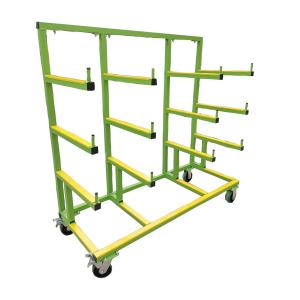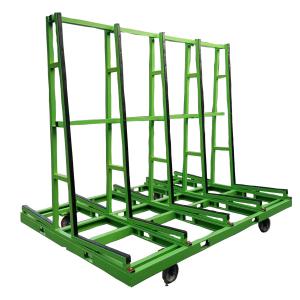WINDOW PROFILE RACK IS A STORAGE SYSTEM SPECIFICALLY DESIGNED FOR STORING AND ORGANIZING WINDOW PROFILES.
Window profiles are the structural components used to create window frames, typically made of materials such as aluminum, PVC, or wood.
Window profile racks are commonly found in manufacturing facilities or warehouses where window frames are produced or stored. These racks are designed to accommodate the length and shape of window profiles and provide a systematic and efficient way to store and retrieve them.
The specific design and features of factory price window profile rack may vary depending on the manufacturer and the requirements of the facility. However, here are some common characteristics:
Storage Capacity: Window profile racks are designed to hold multiple profiles of different sizes and lengths. They may consist of horizontal bars or shelves with sufficient spacing to accommodate various profiles.
Vertical Storage: Window profiles are usually stored vertically to save space and ensure easy access. The racks may have multiple tiers or levels to maximize storage capacity.
Protection and Support: Window profiles can be delicate and prone to damage if mishandled. The racks are equipped with padding or protective materials to prevent scratches or dents. Additionally, they provide adequate support to prevent bending or warping of the profiles.
Accessibility: The design of the window profile rack allows for easy loading and unloading of profiles. It may include features such as forklift pockets or cranes to facilitate movement and positioning of the racks.
Organization: Window profile racks often have labeling or identification systems to categorize and locate profiles quickly. This helps in inventory management and streamlines the production or distribution process.
Window profile racks play a crucial role in maintaining the integrity of window profiles and ensuring efficient storage and retrieval. By utilizing such racks, manufacturers can optimize their space, protect their products, and enhance their operational workflows.
 English
English Spanish
Spanish JINAN BLUETEK INTELLIGENT CO.,LTD.
JINAN BLUETEK INTELLIGENT CO.,LTD.

